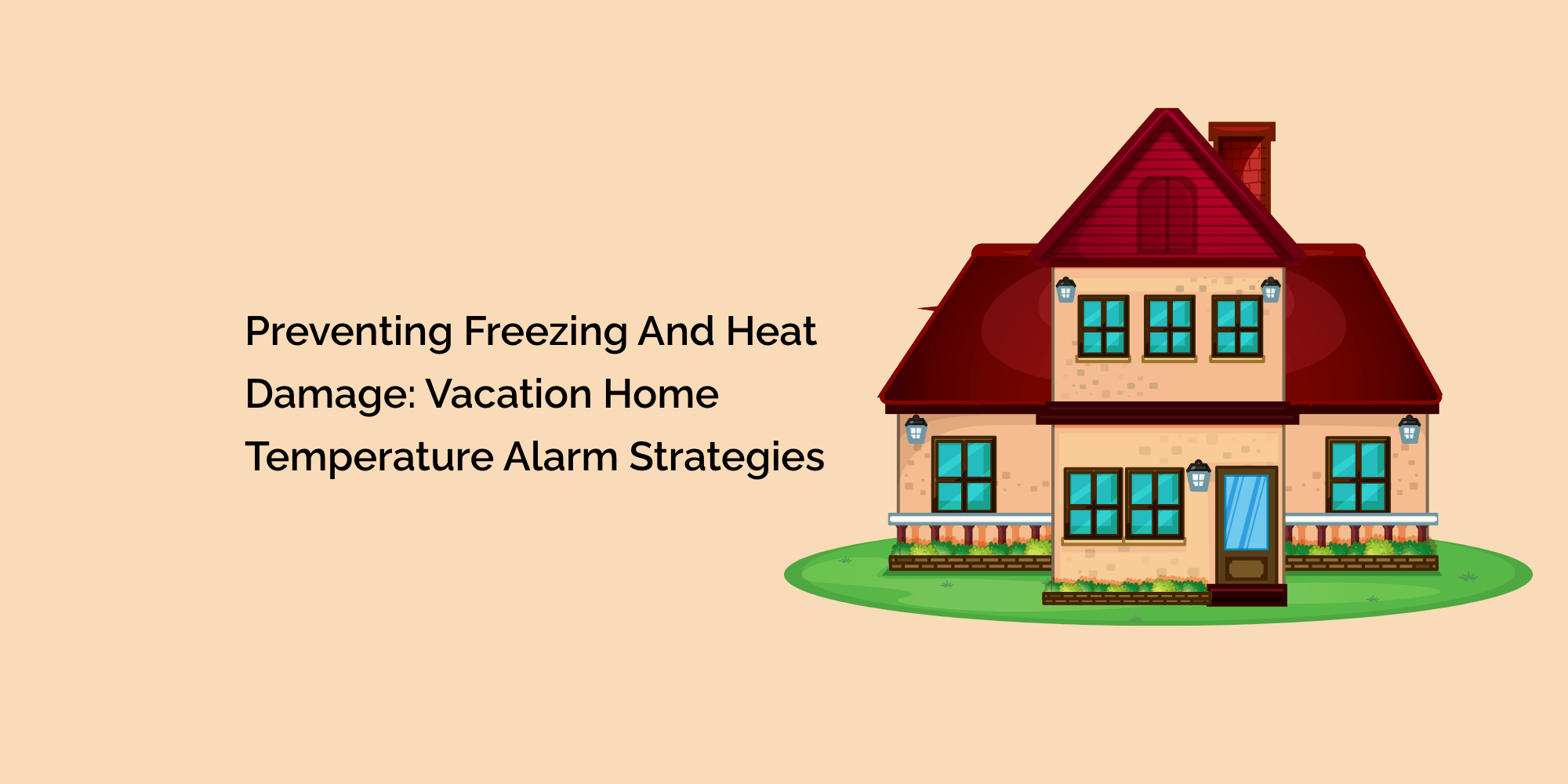Vacation homes are cherished getaways that offer relaxation and tranquility. However, when left unattended for extended periods, these properties can be vulnerable to temperature extremes that lead to freezing or heat-related damage. Implementing temperature alarm strategies is crucial to protect your vacation home from such risks. Temperature alarms provide early warning signs of temperature fluctuations, allowing you to take immediate action and prevent costly damage. This blog will explore effective temperature alarm strategies to avoid freezing and heat damage in vacation homes. We will discuss the importance of temperature monitoring, the risks associated with extreme temperatures, and practical steps to implement temperature alarms. Following these strategies, you can safeguard your vacation home, minimize potential property damage, and ensure peace of mind during your time away.
Understanding the Risks of Temperature Extremes in Vacation Homes
We will discuss the risks associated with temperature extremes in vacation homes. Freezing temperatures can lead to frozen pipes, water damage, and potential mold growth. On the other hand, excessive heat can cause material deterioration, warped furniture, and high humidity levels. Understanding these risks highlights the importance of temperature monitoring and proactive prevention.
The Role of Temperature Alarms in Preventing Freezing Damage
Temperature alarms play a vital role in preventing freezing damage in vacation homes. We will explore how these alarms provide early warning signs when temperatures drop to unsafe levels. By promptly receiving alerts, homeowners can take preventive measures such as adjusting thermostats, insulating pipes, or activating heating systems to prevent freezing and potential water damage.
Strategies for Protecting Pipes from Freezing
We will discuss practical strategies for protecting pipes from freezing in vacation homes. This includes insulating exposed pipes, sealing gaps and cracks to prevent cold air infiltration, and ensuring proper insulation in attics and crawl spaces. These proactive measures, combined with temperature alarms, can significantly reduce the risk of frozen pipes.
Utilizing Heat Alarms to Prevent Heat-Related Damage
Heat alarms are essential for preventing heat-related damage in vacation homes. We will explore how these alarms provide alerts when temperatures rise to potentially damaging levels. By receiving timely notifications, homeowners can take corrective actions such as adjusting thermostats, installing window treatments to block excessive sunlight, or activating air conditioning systems to maintain optimal indoor conditions.
Maintaining Optimal Temperature Ranges
Maintaining optimal temperature ranges is crucial for preventing freezing and heat damage. We will discuss recommended temperature ranges for vacation homes during different seasons and climate conditions. By setting appropriate temperature thresholds on temperature alarms, homeowners can ensure that their properties stay within safe temperature limits.
Utilizing Remote Monitoring for Timely Alerts
Remote monitoring is a valuable feature of temperature alarms for vacation homes. We will explore how remote monitoring capabilities enable homeowners to receive real-time alerts and notifications on their mobile devices or through online platforms. This allows for immediate action, even when homeowners are miles away, minimizing the potential for property damage.
Implementing Power Failure Alerts
Power failure alerts are crucial for vacation homes, as power outages can disrupt heating or cooling systems, leaving the property vulnerable to temperature extremes. We will discuss how temperature alarms can be equipped with power failure sensors and send alerts when power is lost. Homeowners can then take appropriate measures, such as contacting local utility providers or activating backup power sources.
Coordinating with Local Property Managers or Neighbors
Coordinating with local property managers or trusted neighbors can provide extra protection for vacation homes. We will explore the benefits of establishing a relationship with someone who can periodically check the property, monitor temperature alarms, and take necessary actions in case of temperature emergencies.
Conducting Regular Maintenance Checks
Regular maintenance checks are essential for ensuring the proper functioning of temperature alarms. We will discuss the importance of inspecting sensors, testing alarm systems, and verifying connectivity. By conducting regular maintenance checks, homeowners can detect any issues and ensure that temperature alarms are ready to protect the property at all times.
Certainly! Here are some frequently asked questions (FAQs) about preventing freezing and heat damage in vacation homes with temperature alarm strategies:
What is the purpose of temperature alarms in vacation homes?
Temperature alarms in vacation homes monitor temperature levels and provide early warnings for potential freezing or heat-related damage. They help homeowners take immediate action to prevent costly property damage.
Why is it essential to prevent freezing and heat damage in vacation homes?
Preventing freezing and heat damage in vacation homes is crucial to avoid costly repairs, protect valuable belongings, and maintain a comfortable and safe environment for future stays. It also helps preserve the property's value and minimize potential insurance claims.
How do temperature alarms prevent freezing damage in vacation homes?
Temperature alarms prevent freezing damage by alerting homeowners when temperatures drop to unsafe levels. These alarms enable proactive measures, such as adjusting thermostats, insulating pipes, or activating heating systems to prevent frozen pipes and potential water damage.
Conclusion
Preventing freezing and heat damage in vacation homes requires proactive measures and the implementation of effective temperature alarm strategies. By understanding the risks associated with temperature extremes, utilizing temperature alarms, maintaining optimal temperature ranges, utilizing remote monitoring, implementing power failure alerts, coordinating with local property managers or neighbors, and conducting regular maintenance checks, homeowners can safeguard their vacation homes and enjoy worry-free relaxation. These strategies protect the property from potential damage and provide peace of mind during your time away. With the right temperature alarm strategies, you can confidently embrace the joy and tranquility of your vacation home, knowing that it is protected from freezing and heat-related risks.








